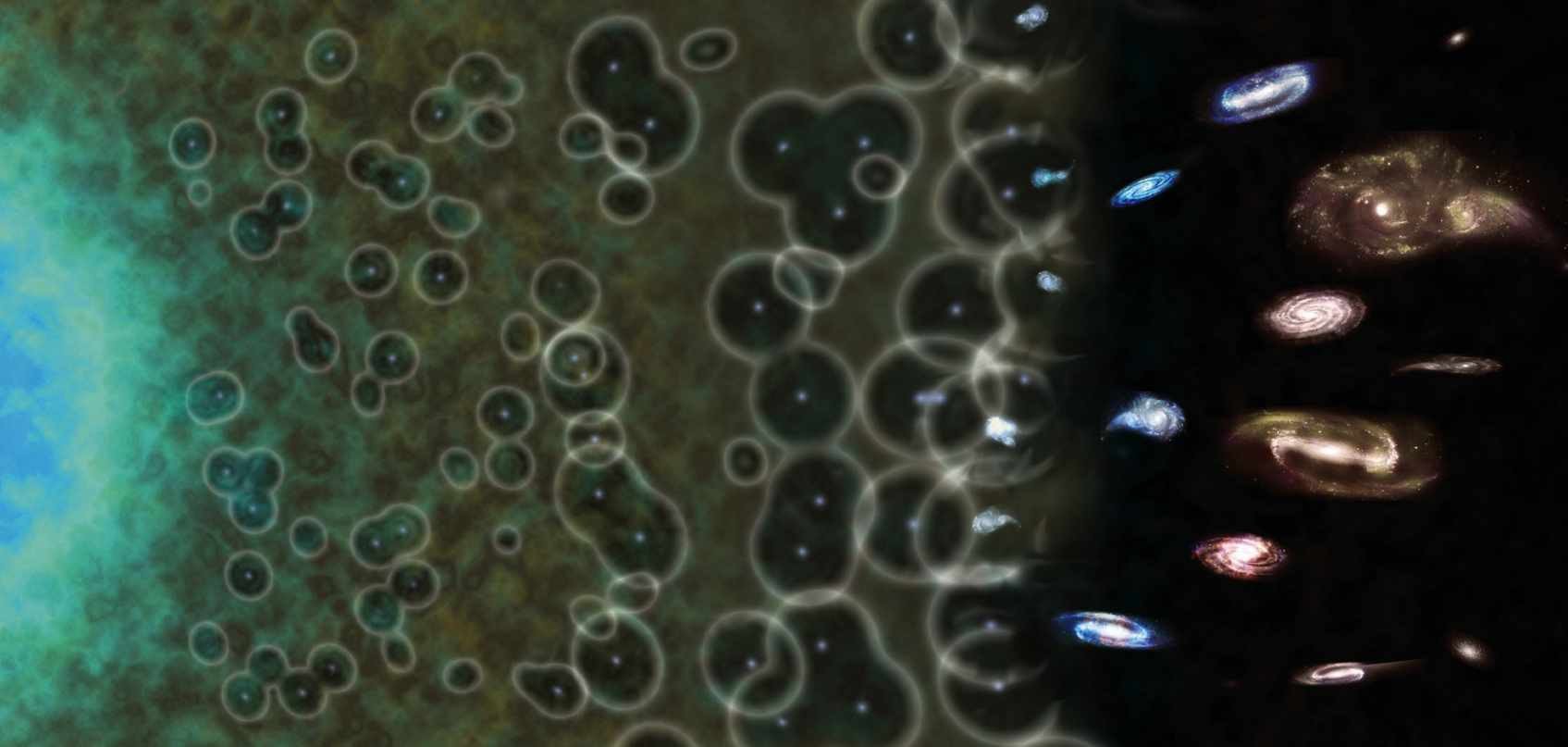Our experts examine the hottest new research
CUTTING EDGE
Blowing bubbles in the early Universe
Do infant galaxies work together to clear the hydrogen around them?

Much of the excitement about early JWST observations has come from finding the most distant galaxies, which we see as they were just a few hundred million years after the Big Bang. What’s now becoming clear is that there are remarkable systems all over the early Universe, and none more so than galaxy JADES-GS-z7-LA, the subject of this month’s paper.
In images, the galaxy is not much more than a faint splodge a few pixels across, but JWST spectra of this faint source tell us that it’s a galaxy at a redshift of 7.3. That means that we’re seeing a system just 729 million years after the Big Bang. What’s even more impressive is that, through careful analysis of that spectrum, we can say something about what this thing was actually like.
It is a galactic minnow, only a hundredth of the mass of the Large Magellanic Cloud. Despite its youth, it has already formed stars, half of which seem to have formed recently in a period of star formation that lasted only a couple of million years. It’s still producing more stars, at a rate that approaches that achieved by the Milky Way, even though our Galaxy is a thousand times more massive.
The Universe in which this small galaxy finds itself must be very different from our own. Back then, the Universe was still lighting up, emerging from its early dark ages. In the dark, the gas between the galaxies will be in the form of hydrogen molecules consisting of two atoms bound together. Today, in the bright glare of the present-day Universe, such molecules will be broken up by starlight into two individual hydrogen atoms.
“If there are enough small galaxies, these bubbles will have begun to overlap, allowing us to see through them clearly”
Understanding how this transition, which cosmologists confusingly call reionisation, happened is an important goal for JWST. Until now, we’ve only been able to look at the biggest and brightest galaxies, but many suspect the collective contribution of light from many smaller systems – like JADES-GSz7-LA – might be more important.
The spectrum of JADES-GS-z7-LA shows a bright line that seems to come from hydrogen molecules in the galaxy. That’s a bit confusing, as this light should be absorbed by the individual neutral hydrogen atoms around the galaxy before it reaches us. One possibility is that ultraviolet light from young stars in the galaxy itself could have cleared a bubble in the molecular hydrogen around it, but not enough stars have formed to clear a space big enough to produce a signal of the observed strength. A nearby companion, which seems to be at the same distance, isn’t big enough to help.
So what’s happening? One possibility is that we’ve found a crowded neighbourhood, home to many small galaxies like JADES-GS-z7-LA. Each of these will have blown its own little bubble, and if there are enough of them these bubbles will have begun to overlap, allowing us to see through them clearly. This region is right on the cusp of that transition from a neutral to an ionised Universe – and JADES-GS-z7-LA and its fellow tiny galaxies clearly have an outsized role to play in this most important event.

Prof Chris Lintott is an astrophysicist and co-presenter on The Sky at Night.
Chris Lintott was reading JADES: Discovery of Extremely High Equivalent Width Lyman-alpha Emission from a Faint Galaxy within an Ionized Bubble at z=7.3.
Read it online at: arxiv.org/abs/2302.12805